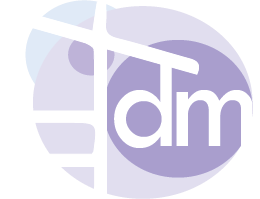Project Overview
Biodiverscovery is an app prototype developed as part of my Professional Diploma in Innovation for Sustainability at UCD Innovation Academy. The app aims to raise awareness of local biodiversity in Ireland by providing users with a platform to record, share, and explore natural soundscapes. Biodiverscovery combines the environmental aspect of biodiversity with the social benefit of promoting mental well-being through interaction with nature's sounds.
Biodiverscovery is an app prototype developed as part of my Professional Diploma in Innovation for Sustainability at UCD Innovation Academy. The app aims to raise awareness of local biodiversity in Ireland by providing users with a platform to record, share, and explore natural soundscapes. Biodiverscovery combines the environmental aspect of biodiversity with the social benefit of promoting mental well-being through interaction with nature's sounds.
Project Goals
Enhance Public Awareness of Biodiversity: Biodiverscovery provides users with an immersive way to engage with local ecosystems through sound, promoting a deeper connection to biodiversity.
Improve Mental Well-being: By integrating soundscapes into the app, users can benefit from the calming effects of nature sounds, often used in mindfulness and meditation.
Background and Problem Identification
The inspiration for Biodiverscovery emerged from my professional experience dealing with corporate sustainability, where biodiversity was consistently rated as a low priority issue among stakeholders. This mirrors broader societal trends, where biodiversity is often overshadowed by environmental concerns such as climate change. I sought to create a solution that would make biodiversity more relatable and accessible to the public.
Initially, the concept focused on creating a platform to log local flora and fauna. However, during my research, I identified the National Biodiversity Data Centre as a comprehensive resource for biodiversity logging in Ireland. Recognizing the need for a more novel approach, I pivoted the project to focus on the experiential side of biodiversity—natural soundscapes. This change was driven by the potential to combine environmental engagement with the mental health benefits associated with nature sounds.
User Research and Persona Development
To guide the design, I developed a user persona—a local biodiversity officer—who would benefit from a tool designed to raise public awareness and engagement with local ecosystems. This persona helped define key app features and the overall direction that the solution would take.
I also researched public interest in nature-based mindfulness practices, finding that apps like Calm and Headspace have effectively used nature sounds to foster relaxation and mindfulness. This informed my decision to incorporate a strong mental well-being component into the app.
Iterative Design Process
Iteration #1: Logging Local Biodiversity
The initial concept focused on allowing users to log sightings of local flora and fauna. This feature was modeled after existing data-centric biodiversity platforms, but it lacked the experiential connection I wanted to foster with users. Given that the National Biodiversity Data Centre already offered an excellent resource for this kind of data collection, I realised the app needed to differentiate itself with a more innovative approach.
The initial concept focused on allowing users to log sightings of local flora and fauna. This feature was modeled after existing data-centric biodiversity platforms, but it lacked the experiential connection I wanted to foster with users. Given that the National Biodiversity Data Centre already offered an excellent resource for this kind of data collection, I realised the app needed to differentiate itself with a more innovative approach.
Iteration #2: Shift to Soundscapes
After further research, I decided to pivot the app towards an immersive soundscape-sharing experience. I conceptualised Biodiverscovery as a platform where users could upload soundscapes recorded in nature and share their experiences with others. Each uploaded soundscape would include contextual information such as location, time, personal notes, and tags related to the local biodiversity (e.g., birdsong, water sounds). This shift moved the app away from being purely data-driven and towards a more sensory, personal connection with the environment.
After further research, I decided to pivot the app towards an immersive soundscape-sharing experience. I conceptualised Biodiverscovery as a platform where users could upload soundscapes recorded in nature and share their experiences with others. Each uploaded soundscape would include contextual information such as location, time, personal notes, and tags related to the local biodiversity (e.g., birdsong, water sounds). This shift moved the app away from being purely data-driven and towards a more sensory, personal connection with the environment.
The Solution
Biodiverscovery serves two key purposes:
Platform for Soundscape Sharing: Users can upload soundscapes recorded in natural locations around Ireland, along with personal notes and context, such as the time and location of the recording, and tags to categorize sounds (e.g., water, birdsong, forest). This feature allows for a user-generated collection of soundscapes, providing a way for people to engage with and appreciate nature in a non-visual, auditory manner.
Biodiversity Education: The app also serves as an educational tool, providing users with information about the local flora and fauna associated with the recorded soundscapes. This layer of context encourages users to learn more about their local ecosystems while engaging in mindful listening.
The app also includes a search functionality where users can filter soundscapes based on location, type of sound, or the flora and fauna associated with the area, allowing users to tailor their experiences based on personal preferences or mindfulness needs.
